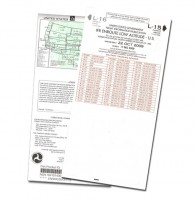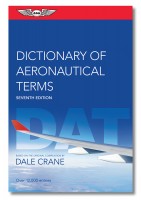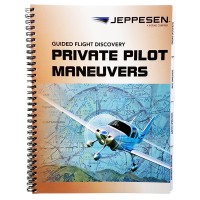FREE SHIPPING ON ORDERS OVER $350 (USA ONLY - SOME EXCLUSIONS APPLY) | 877-4-SPRUCE
ASA Pilot Medical Handbook Human Factors For Successful Flying
Select Model:
 Soft Cover
Soft Cover eBook-PD
eBook-PD eBook-EB
eBook-EBOverview
|
Being a safe pilot requires more than completing flight training and staying current. Full competency comes from the ability of a pilot to develop a keen awareness of the physiological aspects of flying, as well as those that influence workload and fatigue, decision making, and situational awareness. The Pilot Medical Handbook was compiled as a guide for study in these areas. With the Medical Handbook for Pilots Advisory Circular (AC 67-2) long discontinued, this handbook is the only printed resource available with a collection of applicable FAA and Civil Aerospace Medical Institute (CAMI) documents, articles and reports.
Pilots must thoroughly consider the human element and inherent physiological aspects of flight—as well as the machine and weather—if safety is to be maintained. Pilots can use the plentiful information in this handbook to help them make consistent, informed go/no-go and inflight decisions. |
Features
- Assessing and determining personal minimums
- Medical certification questions and answers
- Stress management
- Information for pilots considering LASIK surgery
- Visual illusions and spatial disorientation
- Flying safely with passengers
- and much more!
Specifications
- Page Count: 100
- Illustrations: Full color
- ISBN Number: 978-1-56027-717-0
- Dimensions: 8.375 x 10.875 inches
- Date Published: 2009
Documents
In The Box
- eBook PD / EB - A protected document that looks identical to its print book counterpart. Exact formatting and layout of the print books is maintained (text, images, margins, page breaks, etc.). Displays best on 10-inch or larger screens. Not recommended for small screens (phones) which require you to zoom in and pan around to see the full page. This document is not a .pdf file type.
- Softcover Book - Printed book with heavyweight cover stock.
Q&A
Please note, Aircraft Spruce's personnel are not certified aircraft mechanics and can only provide general support and ideas, which should not be relied upon or implemented in lieu of consulting an A&P or other qualified technician. Aircraft Spruce assumes no responsibility or liability for any issue or problem which may arise from any repair, modification or other work done from this knowledge base. Any product eligibility information provided here is based on general application guides and we recommend always referring to your specific aircraft parts manual, the parts manufacturer or consulting with a qualified mechanic.








 FREE Shipping
FREE Shipping





























